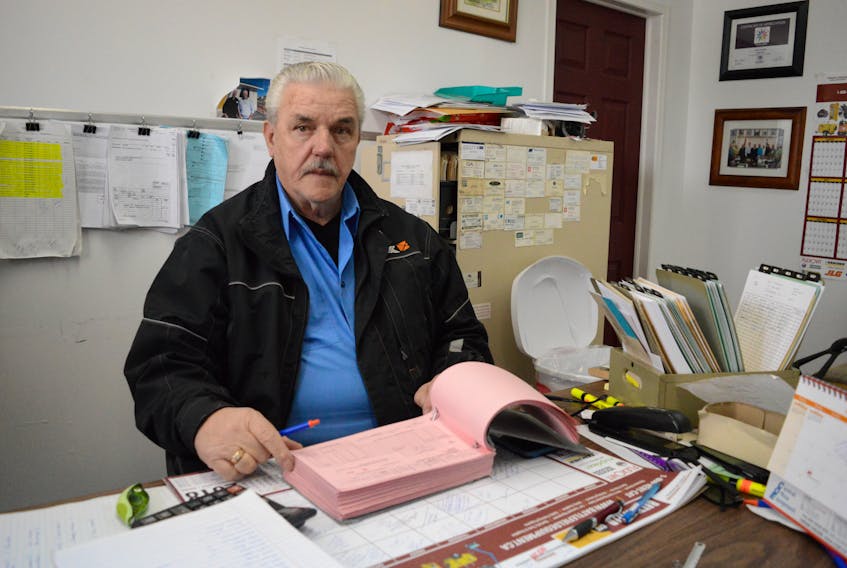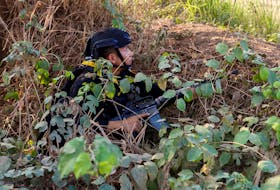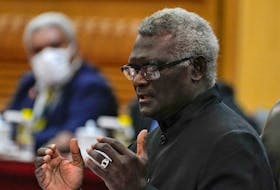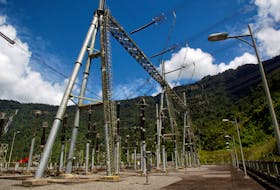TWILLINGATE AND FOGO ISLAND, NL – With projected quota cuts to an already curtailed fishery, some shrimp harvesters say they will not even bother chasing the species this year.
Perry Collins of Seldom on Fogo Island has harvested shrimp for over 10 years. He says if quotas go lower than they already are, there will be little to no profit in taking part in the shrimp fishery.
“If the quota goes any lower … they may as well close it out all together,” Collins said. “With the time you take to gear up and change over from your other fisheries, it’s really not worth going after.”
Collins expects many harvesters will not take part in the shrimp fishery this year, particularly those with only a single quota.
Fish, Food and Allied Workers Union representative Jason Spingle said in an earlier interview with the Pilot that the expected quota cuts are likely to be 15 per cent for gulf shrimp and 16 per cent for northern shrimp. This is on top of extensive shrimp quota cuts in the past two years, making what’s left to catch only a tiny portion of what was once available to harvesters.
Dominic Leblanc, federal minister of Fisheries, Oceans and the Canadian Coast Guard (DFO), has proposed a proportional quota-sharing approach to make the fishery more viable for its harvesters. This policy would create a “buddying-up” system, allowing multiple harvesters to catch their quotas together on a single vessel and reduce overall costs.
Collins believes some harvesters may take advantage of this system, but says it mostly benefits those who already have several shrimp quotas to catch.
“Some of the boats that already got three or four quotas, they can make it worth their while to go,” he said. “If they can buddy-up enough to get two or three trips at it they’ll go after it. But if you’ve only enough quota for one trip it’s not going to be worth gearing up for.
“You won’t cover your expenses. When you come back you’re not going to make anything on it.”
Harbour master Gordon Noseworthy of Twillingate’s Harbour Authority agrees that many harvesters will not find much advantage in the proposed quota-sharing approach.
“They’ll cut down on their overhead but there’s still next to nothing to catch for each of them,” Noseworthy said.

A reverberating downfall
Dwindling shrimp biomass on Newfoundland and Labrador’s Area 6 fishing grounds is having a reverberating effect on harvesters, processors, harbour authorities and whole communities.
“The spin-off from the cut in shrimp is that huge, it’s undefinable,” said Noseworthy. “It’s not just Twillingate – there’s lots of little communities affected and some are next to shutting down because of it.”
When Twillingate’s Notre Dame Seafoods plant shut down last year due to shrimp cuts, Noseworthy said the town’s harbour authority also took a $32,000-hit.
To deal with this loss of income, maintenance repairs were cut, along with other reductions. According to Noseworthy, DFO provided extra funding when additional money was needed.
“We still got to operate, but operate with $32,000 less than we did before,” he said. “So we’ve had nothing but cut backs – how much further can you cut back? We’ve pretty much gone to our limit.”
Noseworthy is upset that the inshore shrimp fishery has been depleted, yet the offshore fishery for Area 6 remains in operation – and the plant in Twillingate is reaping no benefits.
“These factory freezer trawlers are still fishing Area 6. That’s our area and that’s our shrimp,” he said. “If they weren’t out there you’d still have a viable inshore fishery.”
Collins agrees if the inshore shrimp fishery is now nearing its end, the offshore fishery should also close
“Personally I think Area 6 should be closed down for a year or two and see what happens, shut it down for both inshore and offshore,” Collins said. “It’s no good to close the inshore and keep the offshore going because then only they will reap the benefits of it.
“Allow the stocks to rebuild in Area 6 and let’s see what happens.”
With talk of a more viable groundfishery, Collins says it would be much more valuable to put the shrimp fishery on hold and focus quotas elsewhere.
“It’d be better to close it out all together and seek quotas in other areas,” he said. “Especially with cod coming back on track, a lot of people would opt to go out for that instead.”
Related:
Key northern shrimp stock off NL down again
Seeking survival
An official announcement on whether Twillingate’s plant will re-open is expected in April, but prospects are bleak. Noseworthy says if a percentage of what’s caught in the offshore trawlers could be processed at the plant, that would re-employ workers and keep the plant open another year.
Noseworthy worked at the Twillingate plant years ago when it was still processing groundfish and played a key role in its transition to a shrimp-based plant.
He feels without a viable fishery, the community will suffer immensely.
“We got a big tourism industry going here, but this is a fishing community,” he said. “This place was known as the fishing capital of the north for years.
“They cannot develop a fishery in Newfoundland without including this place because we’re right in Area 6.”
Whether processing shrimp caught offshore or transitioning the plant back to groundfish, Noseworthy hopes there is a good future in store for processors in Twillingate.
“The plant may be lost now but we lost it before,” he said. “We got lucky last time and found a way to bring the plant back. Hopefully we have a way to do that again.”








